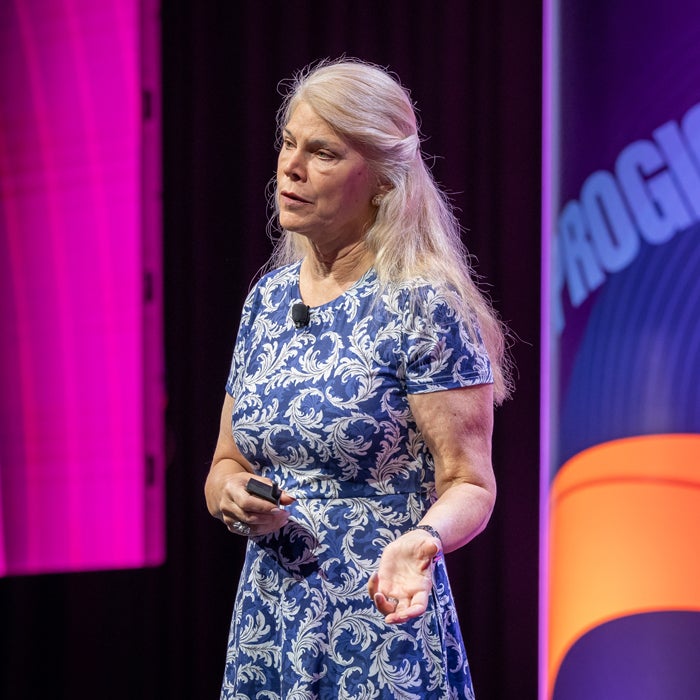Connected TV was a star of AdExchanger’s Programmatic I/O show in Las Vegas this week.
And I’m not just saying that because I get paid to write about how cool streaming is. Ad tech experts agree with me. (Or, maybe, I agree with the ad tech experts?)
Anyway, I moderated a panel at Programmatic I/O with media buyers from Dentsu, Publicis and MiQ, and they all told me television is transforming into a digital ad medium and demand is rising for programmatic buying options.
But there’s a limit to how much TV ad buying should digitize, Needham analyst Laura Martin argued on stage.
Finding a place in the purchase funnel
To some degree, the digitization of TV marketing is inevitable.
Wall Street investors prefer advertising and media companies with the most promising long-term profitability. One way to get there is for streaming companies to access shopper data and strike partnerships with retailers to court advertisers with the promise of performance and attribution.
Publishers want to relabel connected TV as a performance channel, Martin said. But if that happens, she continued, “CTV will lose its cred” among buyers and brands as a viable replacement for legacy linear commercials.
Say what you will about linear, but it’s a mass reach vehicle. And if CTV doesn’t provide the same reach opportunity, Wall Street may cool on public companies with a CTV advertising business, Martin said.
The reality is, upper-funnel channels, like streaming, have a strong downstream impact on outcomes even if they don’t directly drive a purchase.
For example, CTV’s ability to drive mass reach and brand awareness is why more retail media spend is moving to streaming, said Max Willens, a senior analyst at eMarketer, also speaking at Programmatic I/O this week. According to eMarketer, the proportion of retail media spend going to CTV should grow from 12% this year to 20% by the end of 2027.
Streaming meets the open web
But investors are attracted to CTV as more than just a way to drive reach. They also like the mutually beneficial relationship between CTV and the open web, Martin said.
Streaming companies, for instance, are embracing programmatic and open web partners to improve targeting and attract new sources of demand.
Martin pointed to Roku, Fubo and Disney as examples of companies that all have deep relationships with The Trade Desk. Fubo and Disney were early adopters of UID 2.0, while Roku recently inked a new deal with the DSP to make it easier for marketers to buy its supply programmatically.
This trend “makes public ad tech companies dealing in the open internet more valuable to us [as investors],” Martin said. “And [it] will end up hurting walled gardens.”
Walled gardens typically stake their claims to the bottom of the purchase funnel, she said, whereas what brands need is full-funnel marketing.
So when it comes to the doomsayers claiming that walled gardens are eating the open internet’s lunch, “I call shenanigans,” Martin said.
Are you enjoying this newsletter? Let me know what you think. Hit me up at [email protected].



















